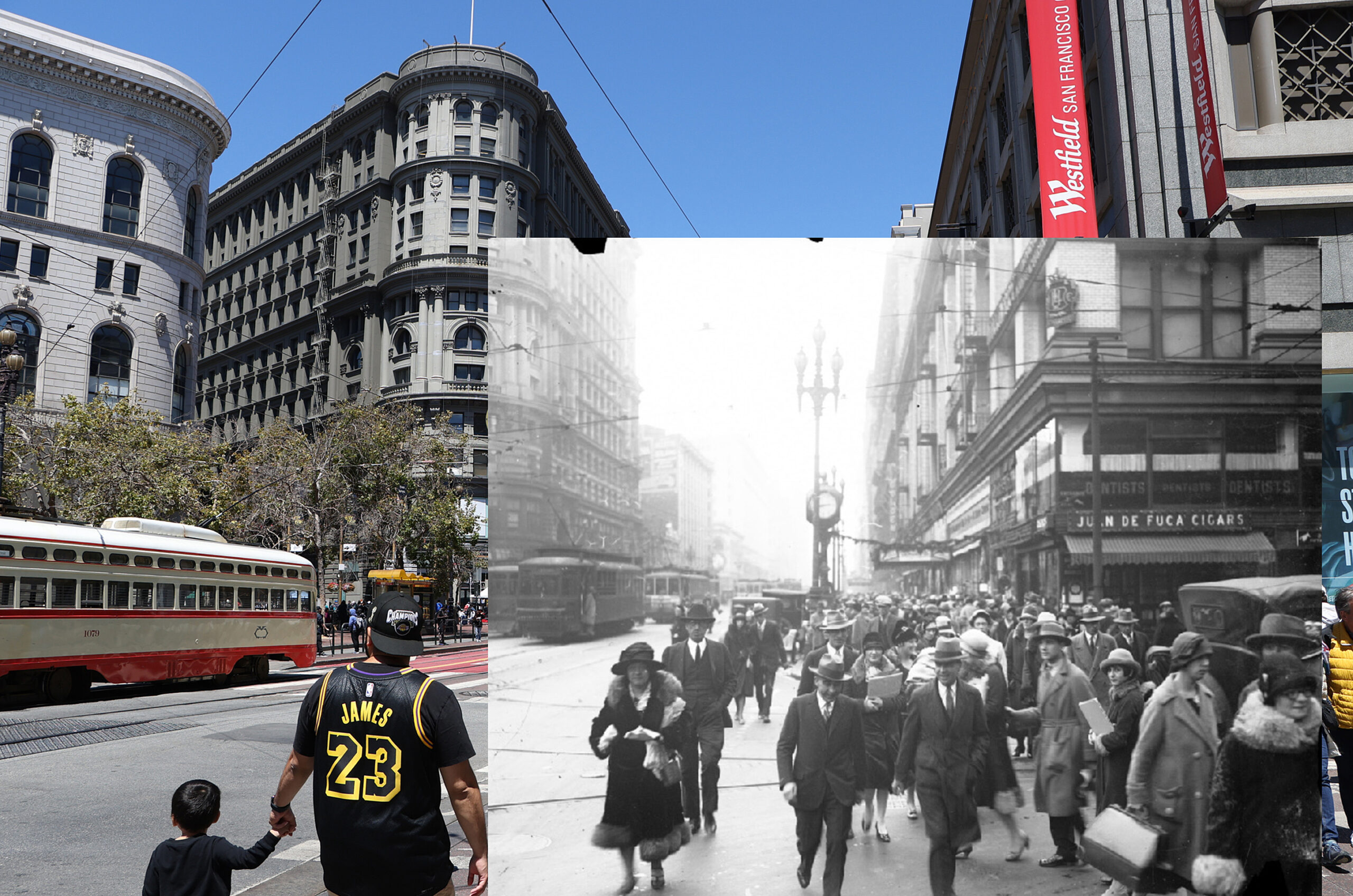The corner of 5th and Market has changed surprisingly little in the past 100 years. A photo from OpenSF History shows several of the same buildings, streetcars still lumbering past, and people passing on the sidewalks (albeit fewer than there were a century ago).
Of course, some things have changed. Retail brands and tenants have cycled through the Market Street Flood Building (left), and what was once the Lincoln Building (right) became the current Westfield San Francisco Centre.
But what about that little corner shop, located on the right side of the photo?
That was Juan de Fuca Cigars. Not much is known about this specific brand, but it earned its namesake from Greek explorer Juan de Fuca (1536-1602) who traveled through the Pacific Northwest on the Spanish crown’s dime.
Cigars were a popular luxury in the United States throughout the late nineteenth and early twentieth centuries, particularly before the explosion of the cigarette industry in the 1920s. By the 1880s, cigars were the most popular tobacco product in the country, and connoisseurs saw Cuban cigars as the crème de la crème of the industry—a reputation they still hold today.
What isn’t widely known is that the cigar industry in San Francisco was largely dominated by Chinese manufacturers, wholesalers and retailers in the mid-to-late nineteenth century. Some historians estimate that by 1870, more than 90% of the cigar industry’s labor force were Chinese American. And by the turn of the century, contemporary newspapers in SF reported upwards of 150 Chinese-owned cigar factories, many of which employed upwards of 100 Chinese workers each.
But as Chinese-owned companies started to dominate the cigar industry, racial tensions rose in San Francisco as white-owned factories capitalized on widespread anti-Asian sentiment to drive Chinese cigar manufacturers and workers out of the business.
Particularly in the 1880s, white cigar makers formed affiliations like the White Cigar-makers’ Association of the Pacific Coast or the White Co-Operative Manufacturing Co., which promised to combat what they viewed as the “deterioration” of cigar quality because of its origins in Chinese labor. The group aimed to promote white racial purity by framing the “quality control” of cigar manufacturing as an industry necessity.
This resulted in numerous targeted inquiries into the quality, safety and cleanliness of Chinese cigar manufacturing in California. SF newspapers reported health and safety inspections into Chinese-owned cigar companies, often describing images of abuse or dirtiness in their factories. Some cigar companies started to include “White Labor” labels on their boxes to increase sales, even if their labor originated from Chinese workers, and others signed “Protect Home Industry” pledges to neither buy nor sell cigars produced by Chinese individuals.
The Chinese Exclusion Act of 1882 ultimately slowed the rise of Chinese-owned cigar companies and wholesalers in San Francisco and pushed many Chinese workers out of the industry. While some remained, the anti-Chinese campaign in the 1880s all but eliminated Chinese American presence in the cigar industry.
Even if Juan de Fuca Cigars did (or did not) have a hand in the California cigar industry’s fraught past, its presence in this 1920s photograph is evidence of decades of industry secrets and untold histories–one which highlighted the intertwined relationships among labor, racial ideology and luxury goods. It also is an unfortunate reminder that today’s anti-Asian sentiment has long, ugly roots in the city.
For more Then/Now photo comparisons, see the Standard Instagram.
